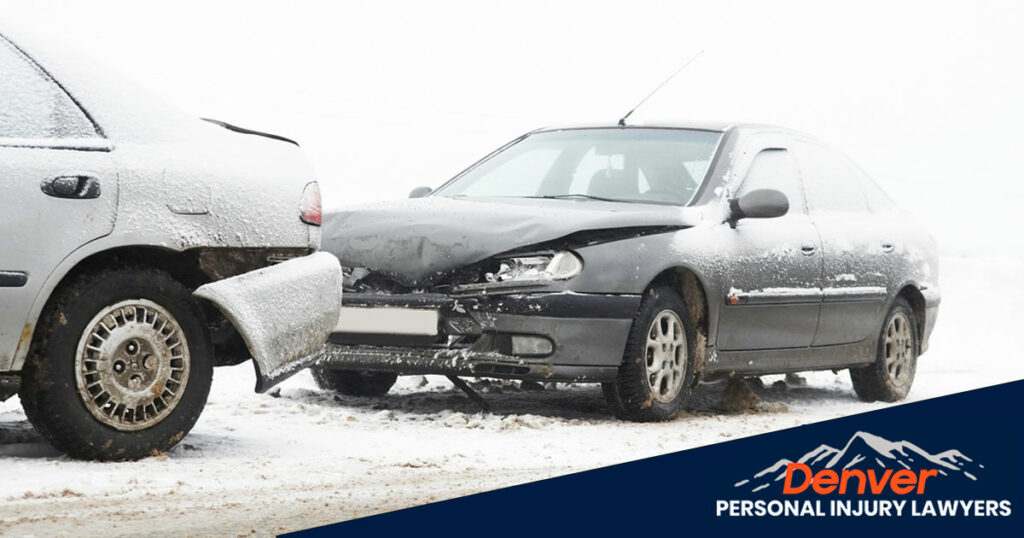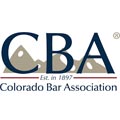Updated: November 18, 2024 by Jonathon Douglas
What happens when you are in a car accident in bad weather? Snow, sleet, and black ice can reduce visibility and make stopping or turning difficult. The reality is that you are still supposed to be able to control your vehicle regardless of weather conditions. If you cause an accident because your car slides on ice or snow, you are still at-fault. That is why is is extremely important to leave extra room during poor weather conditions in Colorado.
Read on to learn about liability in snow and ice crashes and some relevant Colorado laws.
Table of Contents
ToggleColorado Driving Laws Around Snow and Ice
Driving Too Fast on Snow and Ice in Colorado
Colorado Revised Statutes CRS section 42-4-1101 (1) states that driving over a “reasonable and prudent” speed on snow or ice can be negligent. This means the motorist who caused the accident in the snow can be held legally responsible for the other driver’s injuries. Therefore, they can still be held liable even if they are not driving over the speed limit but fail to exercise reasonable caution in the snow.
The Colorado statute requires drivers to practice “reasonable care” under the conditions. This means that drivers should use their judgment to drive in a way that is reasonable in icy and snowy conditions. However, this is a subjective requirement since “reasonable” can differ depending on the circumstances. As such, the statute is flexible, similar to the common law that requires motorists to slow down as the weather conditions worsen. In general, a car crash will be evidence that the at-fault party may have been driving without reasonable care.
Tailgating That Leads to a Rear-End Crash
In addition to controlling their speed, Colorado drivers should keep enough distance between themselves and other cars. Since snow and ice can decrease traction, vehicles require a greater distance to make stops.
Under Colorado Statute CRS section 42-4-1008 (1), drivers should refrain from following another car too closely. They should also regard the speed of their vehicles and other vehicles. Therefore, if a driver rear-ends another driver in the snow or ice, they are most likely liable for the accident. In addition, if you sustain injuries from the accident, you might be able to recover compensation.
Reckless And Careless Driving In The Snow
In severe icy or snowy roadway conditions, speeding or failing to use reasonable care is considered reckless driving under Colorado Statute Title 42-4-1401 or careless driving under Title 42 section 4-1402.
Snow or Black Ice Accident Liability
Who is at fault for an accident in the snow or ice? Many accident victims wonder whose insurance will pay for the damages. The answer is that the person who loses control is liable if they slide on snow and hit your vehicle. That’s because Colorado has laws requiring drivers to exercise reasonable prudence while driving in snow. Therefore, you will likely be covered under the other driver’s liability coverage.
The at-fault driver may be surprised that they are still liable for causing an accident in the snow. However, since drivers are responsible for driving safely regardless of conditions, they are still legally responsible. You can’t blame the weather for a car accident.
Another scenario where the at-fault driver might not be found liable is if the ice and snow were unforeseen and unexpected. Since Colorado laws expect drivers to operate with reasonable care, that means taking extra care in snow and ice. That also includes using sound judgment to determine if your vehicle is adequately equipped to drive safely in the given conditions.
Black Ice Accidents in Colorado
Black ice is dangerous ice that forms roadways, and the moisture freezes. It’s a thick layer, the same color as the blacktop, making it difficult for drivers to spot. Black ice is most commonly found:
- Since bridges and overpasses are elevated surfaces, temperatures drop rapidly there. Sometimes roadway signs warn about ice on the bridge or the highway.
- Cold rain. The light rain that falls and is below freezing can form black ice.
- Shadowy areas. Sunlight can burn off black ice before it forms altogether, but there might be black ice in shaded areas (like under trees or inside tunnels).
All-wheel and four-wheel drive vehicles can still lose traction and get into an accident due to black ice. So slow down if you see a tiny patch ahead and think it might be black ice. It’s better to be safe than sorry.
Tips to Avoid a Black Ice Accident in Colorado
SafeWinerRoads.org reports that in the US, over 1,300 people die in traffic fatalities yearly in the snow. Another 116,000 reportedly sustained injuries in car accidents on snowy, slushy, or icy roads.
That’s not all, though. Every year, around 900 people die, and 76,000 sustain injuries in crashes during snowfall or sleet.
Tips to Avoid Accidents in The Snow or Black Ice
- Slow down – speeding on black ice can easily make you lose control of the vehicle.
- Keep a safe distance between the car in front of you. It takes about nine times the regular time to stop on black ice than on a regular road. Ensure that you allow yourself enough space to stop safely.
- Use your headlights – drivers should utilize headlights even in the afternoon. This will help you better spot shiny spots on the road that could potentially be black ice.
- Keep your car maintained, especially the tires. A car that requires maintenance will not run well in snow or icy conditions. Make sure your tires are not bald or worn; ask if this can lead to a severe accident in the snow.
- Don’t use cruise control. Using cruise control on the highway and running into black
If you find yourself on black ice, don’t panic. You can still recover if you stay calm and follow certain safe driving techniques;
- Use your front-wheel drive and turn it in the same direction as you are skidding. Don’t use the bakes or accelerators
- If you have rear-wheel drive, turn the wheel toward the direction you want to go and very lightly hit the accelerator.
- With all-wheel drive, use your anti-lock brakes and brake normally. If you don’t have that, lightly pump the brakes while turning out of the skid.
Injured in a Denver Car Accident in the Snow?
Poor weather causes a lot of accidents. When an injury occurs, that’s when you should be speaking to a lawyer. Don’t let the other person try to blame the weather and get out of being help responsible. If you or a loved one was involved in a car accident in the snow, it is best to contact an experienced Denver car accident lawyer. We can help you determine if you have a claim and help you recover for any damages and losses.
We offer a free initial consultation, so contact us today or call (720) 500 HURT.
Making a Difference in the Lives of the People of Denver
If you or a loved one has been seriously injured in an accident, we are here to help. As Denver Personal Injury Lawyers, you are our priority, we listen to your needs and provide individual attention from start to finish. Through persistence, experience, and legal expertise, we handle the insurance companies and medical providers so that you can focus on recovering.
For more information please contact us at Denver Personal Injury Lawyers® to schedule a free consultation with an attorney today. We have five convenient locations in Denver and its surrounding areas to better serve you.
Denver Personal Injury Lawyers®
1001 Bannock St #8
Denver, CO 80204
(720) 500-4878
Denver Personal Injury Lawyers® | Arvada Office
5610 Ward Rd #300
Arvada, CO 80002
(720) 500-4878
Denver Personal Injury Lawyers® | Aurora Office
3190 S Vaughn Way St #550
Aurora, CO 80014
(720) 500-4878
Denver Personal Injury Lawyers® | Centennial Office
9200 E Mineral Ave #100
Centennial, CO 80112
(720) 500-4878
Denver Personal Injury Lawyers® | Lakewood Office
355 S Teller St #200
Lakewood, CO 80226
(720) 500-4878
















